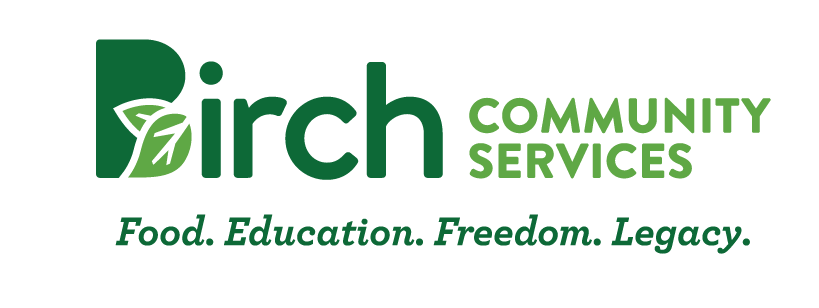What is Rainbow Nutrition?
Did you know that the colors of a food actually convey its relative nutrient-density? It’s true! The various colors in our food are produced by specific health-promoting phytochemicals. The richer the color, the more likely it is that that food is also rich in phytochemicals. Here at Birch we’ll be cycling through the colors of the rainbow to learn how each color group supports our health in different ways. Bonus: Eating the rainbow is a great way to get kids interested in new foods! We’ll talk more about that in future posts.
Eating the rainbow is a highly effective way to make sure you’re eating a diverse selection of micronutrients and filling in any gaps from your diet! With the help of a nutritionist, this approach can also be used to support specific health goals and medical outcomes, including improvement of chronic conditions. An easy way to build in more nutrient-density is to look at your plate and ask, “How many different colors are here? Can I add any more?” The great thing is that you don’t have to include every color at every meal, because your body intuitively processes and stores many of those nutrients for later.
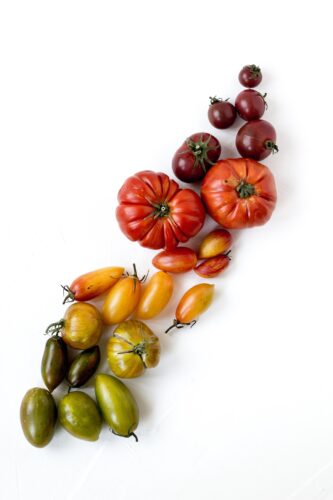
Red Foods
Red foods commonly contain compounds that give them antioxidant, anti-inflammatory, and anti-carcinogenic properties. There’s also a significant amount of research showing benefits for cardiovascular health and blood sugar support – but that’s not even the half of it. These and more outstanding perks are credited to five main phytonutrients: lycopene, ellagitannins, betalains, astaxanthin, and anthocyanins. The redder the food, the more of these phytonutrients are present.
Lycopene
- Red foods rich in lycopene include tomatoes and watermelon, but it can also be found in papaya and pink grapefruit.
- Lycopene is a nutritional heavy lifter for healthy hearts and livers in addition to being highly effective at reducing chronic inflammation.
- This nutrient how been shown to reduce the risk of liver disease, improve non-alcoholic fatty liver disease (NAFLD), support a more favorable blood lipid profile, and reduce the risk of cardiovascular disease.
- Tip: Cook your tomatoes and pair them with fat-containing foods to increase the bioavailability of lycopene, making it easier for your body to use! Eat them raw as well to gain other nutrients.
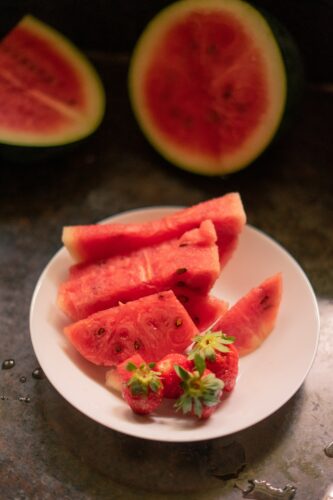

Ellagitannins
- Strawberries, raspberries, cranberries, grapes, and pomegranate are all packed with ellagitannins. Walnuts and pecans are some non-red sources.
- Ellagitannins are antimutagenic, which enables them to protect our DNA and provide excellent support for cancer recovery or prevention.
- Other benefits include blood sugar support, reduced sun-related skin damage, and inhibition of inflammatory cytokines for atherosclerosis.
Betalains
- Red quinoa has the highest antioxiodant ability of all other types of quinoa thanks to the betalains that produce its red color. Red quinoa also contains all nine of the essential amino acids (protein building blocks that our bodies can’t make without a food source), making it a rare plant-based complete protein.
- Beets are another fabulous source of betalains. Check out our spotlight on beets to learn more about this awesome red food!
- Betalains are antioxidative and anti-inflammatory. This nutrient also supports our liver’s detoxification processes.
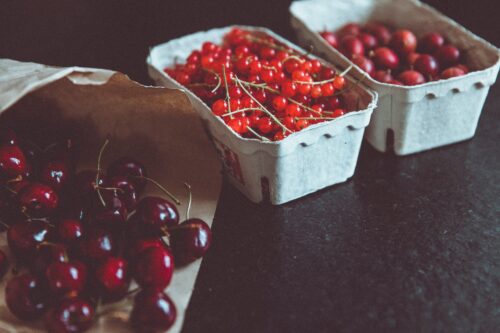

Astaxanthin
- Red foods aren’t just limited to fruits and vegetables! You’ve probably heard about the health benefits of salmon, and – you guessed it – this is partly attributed to the presence of a reddish-pink hue produced by the phytonutrient astathanxin.
- In addition to salmon, other foods containing astaxanthin include shrimp, crab, lobster, and krill.
- Whereas many antioxidant compounds will also have smaller amounts of pro-oxidant properties (nature loves to balance itself!), astaxanthin is a “pure” antioxidant, meaning it doesn’t contribute to oxidation in any way. This is one of the most powerful types of antioxidants that researchers have found to date!
Anthocyanins
- Anthocyanins are yet another red-related phytonutrient that offers antioxidant, anti-inflammatory, and cardiovascular support (are you noticing a trend?).
- Cherries are rich in anthocyanins and have been shown to decrease proinflammatory activity from two cytokines called IL-6 and TNF-alpha. This antioxidant-packed fruit can also reduce the frequency and severity of arthritis attacks. Tart cherries have a ton more antioxidant power than sweet cherries, specifically 20 times the amount of vitamin A and beta carotene!
- Although this phytonutrient is typically more abundant in purple foods, some red foods like strawberries, raspberries, and pomegranate contain small amounts of anthocyanins.
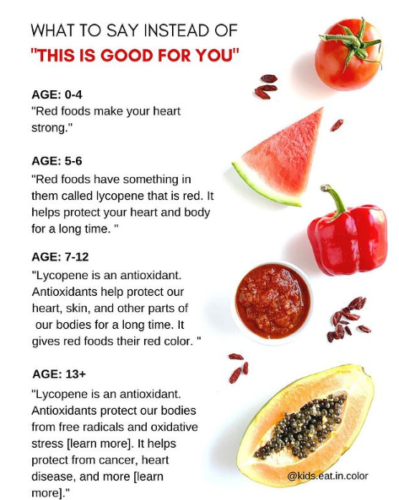

Recipes
The red foods we talked about today are easy to enjoy in their whole form without any special preparation, which is a big win for preserving their nutrient content! Here are some recipes that feature red foods in dishes that help them shine:
- Salmon, Red Quinoa, and Arugula Salad by Marc Murphy
- Watermelon and Cucumber Salad with Pomegranate and Tomato by Megan May
- Hibiscus Berry Smoothie by The Joyful Plateful
- Heirloom Tomato Tart with a Walnut Base by Rebel Recipes
What are some of your family’s favorite red foods? How can you add more red into your diet?
